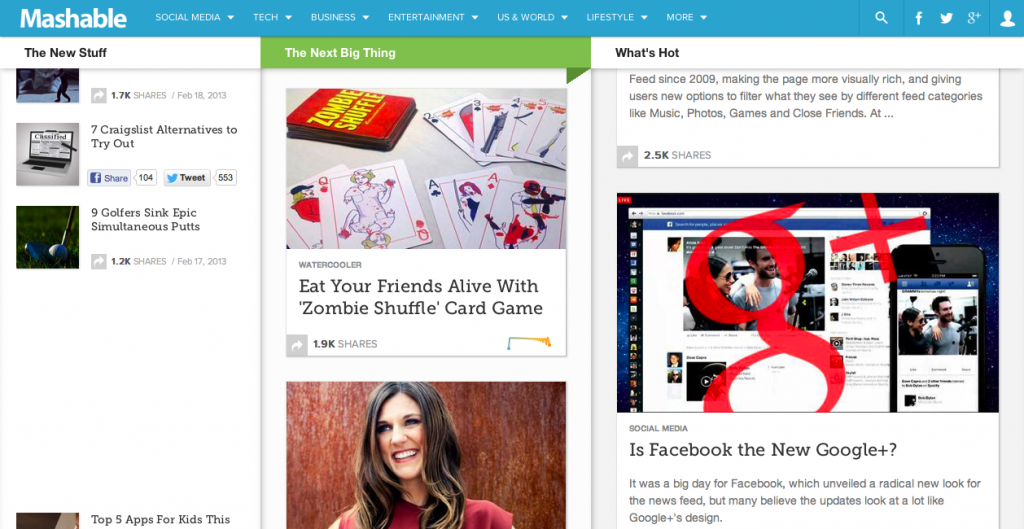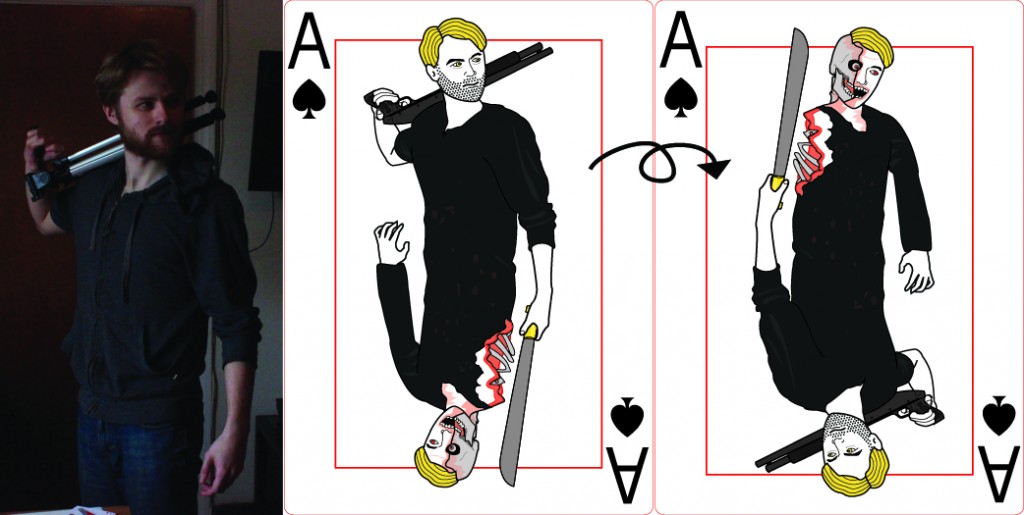Full Disclosure: When we began our Kickstarter campaign for ZOMBIE SHUFFLE we had no idea what we were doing! We knew we had a great idea, fun designs and some friends that offered to help spread the word. The funding should start rolling in by itself right? We got a healthy dose of reality and ended our successful Kickstarter campaign clawing for every dollar. However, we learned 10 important lessons we wish someone taught us on day one.
Step 1: Build an Audience
One of the many things that all successful Kickstarter campaigns have is a large audience before beginning the countdown. Once again, this is something we were missing. We had about 50 followers on our Facebook page and maybe 20 on Twitter. This is dismal when compared to other brands and companies launching Kickstarters to their thousands of fans. Because we didn’t build the audience ahead of time we ended up working on this during the Kickstarter (as well as focusing on a million other things.) Lesson: Spend at least 3 months growing your brand and product awareness BEFORE you hit the Launch button.
Step 2: Research
Look up the websites, blogs and news sites that could possibly feature your Kickstarter campaign. We did a little of this before but mostly played catch up from day one. However we’d highly suggest creating a list with contact info for these sites. A great way of cheating at this is to research a similar product on Kickstarter and find out what sites ran stories on their campaign. Reach out to those same sites!
Another way to find these sites is grabbing the Kickstarter image from that similar product and dropping it on your computer’s desktop. Then from the desktop drop it into Google Image Search and you’ll find all the sites that featured their Kickstarter campaign too. Lesson: Know your territories on the web and make a list of at least 50 websites to reach on day one.
Step 3: Image is Everything
Once you have a prototype of whatever it is you’re putting up on Kickstarter spend the cash (or ask a favor of a photographer friend) to get an excellent photo of your product. We didn’t do this and ultimately used a photo from an iPad as our main campaign picture. A high-quality photo will draw people’s eye to your product and more likely to click that thumbnail and read more. Lesson: Get the best snapshot possible for your product image.
Step 4: Make an Amazing Kickstarter Video
If the product image is the face of your Kickstarter campaign then the video is your voice. It is essential that your product seems innovative and creative. We found that only 25% of our viewers actually finished the video so that tells us to a) keep it short and b) front-load the video with important details at the beginning and then flesh them out in the second half.
We used Adobe Flash to create a short animation of the game ZOMBIE SHUFFLE and mentioned right away that it was the FIRST Zombie card game built around the 52-card deck and explained the object of the game in the first minute. Spend some time writing a script and editing this video to perfection before launch. Show it to friends and listen to their input. Lesson: Your Kickstarter Video WILL make or break your campaign.
Step 5: Press Release
Create a short press release ahead of time and send it out in the morning (around 7:00 a.m. to sit atop the editors inbox in the morning) and format it to look professional. Formatting help here. Create a list ahead of time and send it to at least 100 publications. Send it to local newspapers and international news hubs alike. The first day of your Kickstarter should be spent making follow-up calls to these news agencies to see that they received your press release.
Similar to the press release, research ahead of time and find reporters that specifically write about products or themes similar to your Kickstarter campaign. We reached out, with a personal message, to a writer at Mashable that tended to write about zombies and landed some PR gold with this coverage. Lesson: getting some press coverage can bring a ton of attention to your Kickstarter campaign.
Step 6: Fun Gifts
We spent a ton of time figuring our the gifts for ZOMBIE SHUFFLE. When creating a list of gifts for you campaign make sure that you have something for every level of backer. You’ll want a $1, $5, $20, $30, $50 and so on up to the top dollar backers. Our highest went to $600 and this allows for folks to connect at whatever level is appropriate to them.
Additionally, we decided to allow backers to become zombies in our official deck of cards. This level of interaction and involvement meant that our backers actually became a part of the product they were helping to found. Lesson: brainstorm ideas and ways to connect your gifts to your backers and make sure you have gifts for all levels.
Step 7: Your Friends and One-on-Ones
Let’s say you’ve hit the launch button on your Kickstarter Campaign and are now wondering to yourself, “What is the most effective use of my time to make sure it is successful now?” If you’ve already taken the steps above (and comprehensively reached out to the press, blogs and websites – including follow-ups) then the answer is One-on-Ones. One-on-one conversations are phone calls, private messages and emails that are unique/personal to individual friends and family. They take up a ton of your time but ensure that everyone you know is connected to your campaign. Make sure the message is personal and explain what it is your working on and how they can help – whether it is sharing the campaign or helping to fund it.
We literally would not have made our Kickstarter goal if we hadn’t taken the time to write these messages. Lesson: do not send a mass email or message to your friends and family. Reach out to them with personal message.
Step 8: Updates
As the campaign continues you will want to update your backers and social networks on the progress. ALWAYS keep the updates very positive and the energy high – even on days that you think the campaign is hopeless. A sense of urgency is OK at times but not in your messages. It is alright to ask them to spread the word of your Kickstarter campaign and explain that these campaigns absolutely depend on word-of-mouth to be successful.
Similar to the lesson from One-on-one conversations, always address your backers as “You” instead of “All of you backers” etc. It’s much more effective to say “Because of you we are now 50% funded!” rather than “Because of all of our backers we are now 50% funded!” Benchmark important percentages yet have great reasons to update your backers. Lesson: Updates should also have the personal touch and can be used to reach new backers.
Step 9: Listen!
Critically important to our campaign for ZOMBIE SHUFFLE, we updated our official video one week into funding. We were told over and over again that people wanted more information on the rules and gameplay before funding our campaign. We quickly put together a gameplay video and touted it as “due to popular demand” so that our backers knew that we were listening to them.
Reply to every comment and message, consider making the changes suggested but ultimately do not lose sight of your original dream. We received critical opinions and we incorporated many of them but never lost the core of our idea. Some of the best design ideas and card rules came from folks commenting on our page and website posts. Lesson: be ready to make adjustments based on feedback.
Step 10: Thank you
Thank your backers individually! This is especially important for your largest backers. If they are committing $100+ then they’re probably already expecting some special treatment and rightly so. Message them through Kickstarter and start building a relationship with them. It’s not hard: they like you because of your campaign and you like them because they’re playing a huge role in getting it started. Lesson: communicate immediately with large backers and thank them personally.
These are the lessons we learned from our short Kickstarter experience. While we are sure many comprehensive lists exist online we hope you’ve gained some insight from our own. Don’t forget about stretch goals too – we didn’t really do this but they’re just as important as the above steps. Please contact us if you’d like to ask any specific questions and good luck!










